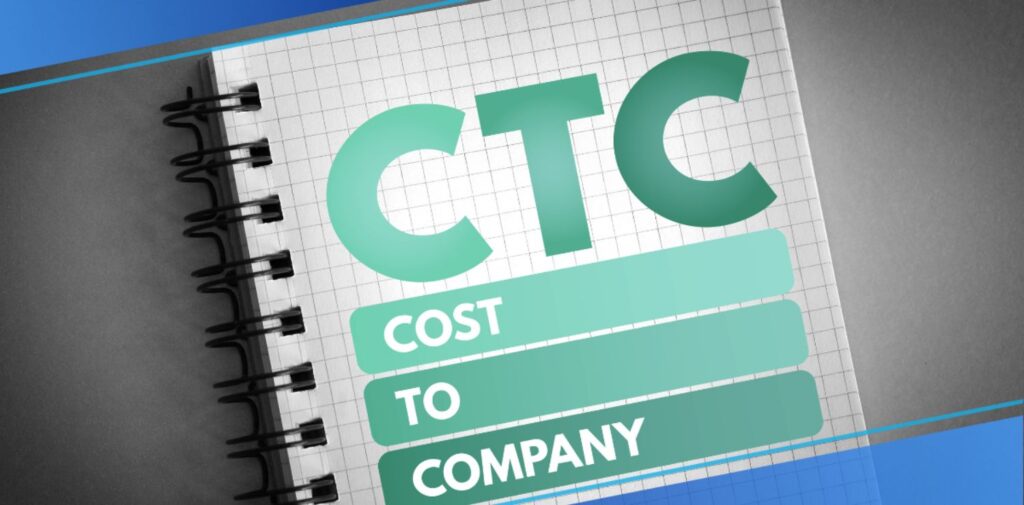In the professional world, salary packages often seem like the holy grail of success, providing validation for one’s hard work, qualifications, and skills. However, the appeal of increasing CTC (Cost to Company) figures can sometimes be misleading. While rising salary numbers appear to signify progress, they often mask a more complex and challenging reality. As you ascend the corporate ladder, the perceived financial rewards may come with hidden costs. This analysis dives into the illusion of salary growth across various stages and exposes the darker truths that accompany higher earnings.
Understanding the Journey: CTC vs. Take-Home Pay
CTC is the buzzword that companies love to promote when enticing candidates with job offers. It is the total amount a company spends on an employee in a year, including salary, benefits, bonuses, and other perks. However, CTC does not directly translate to take-home pay. The difference between the two can be vast, often leading to disappointment when employees realize how little of their CTC actually lands in their bank account each month.
Let’s examine a few stages of salary growth, beginning from a CTC of ₹68,000 per month and progressing to a staggering ₹2,82,000 per month. On the surface, this appears to be a fantastic trajectory, but the devil is in the details.

CTC = ₹68,000 per month: At this level, the take-home pay is often around ₹50,000-₹55,000 after accounting for taxes, provident fund contributions, health insurance, and other deductions. While this may seem reasonable, many people in this bracket feel a tight squeeze after factoring in rent, daily expenses, and savings goals.
CTC = ₹1,20,000 per month: With this significant jump, the expectation is that life will become more comfortable. However, the actual take-home pay might be only ₹85,000-₹95,000. A larger portion of your income gets swallowed up by higher tax brackets, and living costs tend to rise in parallel with income. Additionally, many at this stage face mounting professional expectations that necessitate spending on travel, gadgets, and appearance, eating further into disposable income.
CTC = ₹1,75,000 per month: This salary level offers a seemingly luxurious life, but the reality is often different. With taxes cutting deep, take-home pay may range between ₹1,20,000-₹1,40,000. People often start making lifestyle upgrades, such as buying a car, investing in a house, or indulging in frequent vacations. However, these expenditures create financial obligations like loans and EMIs that reduce overall financial freedom.
CTC = ₹2,28,000 per month: As you approach this upper tier of income, take-home pay increases slightly but is still disproportionately affected by tax cuts and higher financial responsibilities. Your take-home may stand somewhere between ₹1,60,000-₹1,80,000, but by now, you are likely accustomed to a lifestyle that includes heavier financial commitments, whether it’s a second car, expensive schooling for children, or investments in retirement plans. Savings may not increase as significantly as expected.
CTC = ₹2,82,000 per month: Here, you’re one of the top earners, with a take-home pay of around ₹2,00,000-₹2,20,000 after deductions. However, the added responsibilities and stress of managing a high-level job, balancing investments, maintaining an elevated lifestyle, and staying relevant in your field can detract from the enjoyment of this income level. Many employees at this stage experience burnout, dissatisfaction, and the pressure of high-stakes performance expectations.
The Trade-offs of Climbing the Corporate Ladder
One of the lesser-discussed aspects of high-earning careers is the trade-offs that come with them. More responsibility often means more hours at work, increased stress, and less time for personal life. The higher the salary, the more critical the role becomes, leading to longer workdays, sleepless nights, and constant pressure to perform.

Increased Stress and Responsibility: As you rise in rank and salary, the stakes grow exponentially. Decision-making becomes more critical, the margin for error decreases, and job security can often feel less assured despite higher earnings. With more income comes a more substantial burden of responsibility, and many find that the pressure takes a toll on their health and well-being.
Work-Life Balance Takes a Hit: High-paying roles usually come with a cost to personal time. The drive to sustain such high earnings may leave you working 60+ hours a week, taking work calls during weekends, and missing out on family events or personal downtime. Burnout becomes a real risk, as the demands of the job can overshadow the enjoyment of your income.
Social Expectations and Lifestyle Inflation: Once you reach a certain salary bracket, there is an unspoken expectation to live a lifestyle that mirrors your earnings. Upgrading to a bigger house, driving luxury cars, and enrolling children in prestigious schools may become the norm, but these choices can trap you in a cycle of living paycheck to paycheck, even at a seemingly high income. This phenomenon, known as lifestyle inflation, makes it challenging to increase your savings rate despite higher earnings.
The Cost of Security: Higher earnings often require more sophisticated financial management. Tax liabilities increase, and you may need to invest in better insurance policies, estate planning, or financial advisors to manage your wealth. These services come at a cost, eating into what might otherwise be disposable income.
Is It Worth It? Rethinking the Pursuit of Salary Growth
While it’s natural to pursue higher salaries, it’s crucial to reassess what success means to you. More money doesn’t necessarily equate to more happiness, and for many, the price of a high-paying job can outweigh the benefits.

Quality of Life Over Quantity of Pay: For many professionals, a lower salary with a better work-life balance, reduced stress, and more personal time might be more fulfilling. Choosing roles that align with your passions and values may offer more satisfaction than chasing after a bigger paycheck.
Smart Financial Planning: Regardless of your CTC, good financial habits can make all the difference. Saving and investing wisely, avoiding lifestyle inflation, and building a financial cushion can provide more security than a high income alone. It’s also important to consider the long-term impacts of financial decisions, such as the real cost of taking on more debt to support a lifestyle you may not truly need.
In conclusion, while climbing the salary ladder is often seen as the ultimate goal, it’s essential to consider the hidden costs and trade-offs that come with it. CTC is just a number, and it doesn’t reflect the complex realities of managing your financial and personal well-being. Before you chase that next big salary jump, take a step back and evaluate whether it truly aligns with the life you want to lead.




